The Essential Guide to Solar Generator for Off-Grid Living 2023
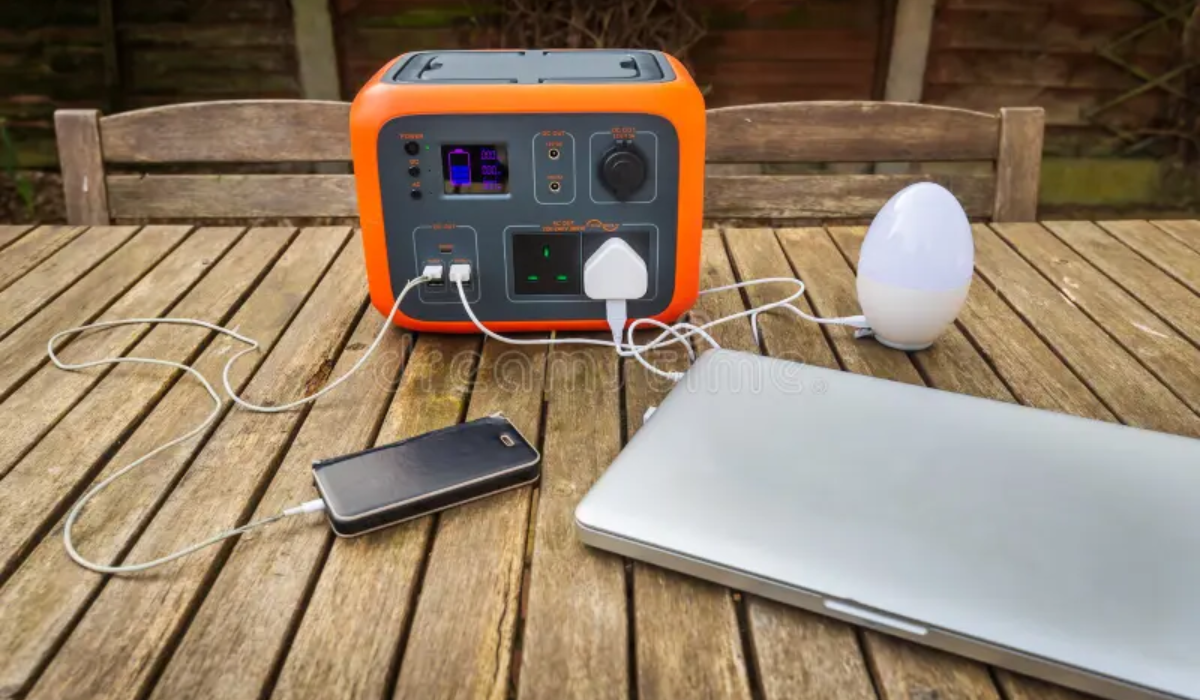
Living off the grid is no longer just a dream for adventurous souls. It’s becoming a practical path to a more self-sufficient lifestyle for many.
However, thriving off the grid requires reliable and renewable power. That’s where solar generators come in.
Solar generators are the ultimate off-grid power source. These clever devices capture and store solar energy daily, providing renewable electricity on demand anytime. Whether you need to run lights, charge devices, or power appliances in a remote cabin, a solar generator for off-grid living covers you.
This comprehensive guide will illuminate everything you need about solar generators for off-grid living.
- Understanding off-grid living
- What is a solar generator?
- Solar Generator vs. Fuel Generator
- 3 Best solar generator for off-grid living
- Factors to consider when choosing a solar generator for off-grid living
- Pros and Cons of Solar Generators for Off-grid Living
- What can you power with a solar generator?
- Typical appliances and tools needed for off-grid living
- Sizing Solar Generator for Off-grid Living
- Solar Generator Vs. Typical Solar System?
- Solar Generator For Off-grid Solar Generator: Final Thoughts
- Frequently Asked Questions
Understanding off-grid living


Gary Collins, in his book “Going Off the Grid: The How-To Book of Simple Living and Happiness, defines off-grid living as
“creating a home that is autonomous and does not rely on public utility connections such as electricity… but not leaving as a caveman or Tibetan monk.”
Therefore, Going off-grid means cutting the cord from public utilities to become self-sufficient. I know it sounds daunting at first!
But with some grit and ingenuity, living off the grid can be quite liberating.
When you make your own power with solar generators, collect rainwater, and grow your own food – you’re answerable to no one.
Now, this lifestyle isn’t for everyone. The comforts of modern living are hard to replicate.
But if you seek freedom or want to tread lightly on the earth, solar power brings off-grid living within reach. Solar generators are life-changing out there.
What is a solar generator?
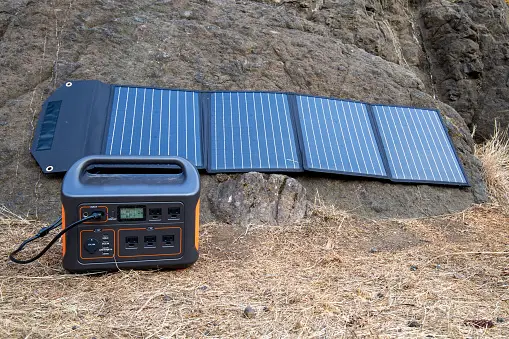

Solar generators sound almost too good to be true – portable devices that can harness power straight from the sun?
But the technology is legit and super useful for anyone looking to live off the grid or power outdoor adventures.
In simple terms, solar generators are like customizable power stations. They contain solar panels to capture the sun’s energy, batteries to store the juice, and outlets to let you tap into the power.
Combining these key components gives you a renewable way to electrify your life using just the sun’s rays.
The best part is solar generators don’t require any gas or diesel like traditional loud, clunky generators.
They operate silently using clean energy, and their compact size makes them easy to take anywhere.
Solar generators have you covered whether you want to illuminate your off-grid tiny home, run a blender for your campsite kitchen, or charge devices on your boat.
Components of solar generator
A solar generator is basically a portable toolkit that lets you harness the sun’s energy to make your own electricity. Pretty neat, huh?
Let’s check out what’s inside these solar-powered boxes:
- Portable Solar Panels: These are the sun catchers! They contain solar cells that convert the sun’s rays into usable energy. Unfold them to start soaking up that sunlight and fuel your generator.
- Rechargeable Batteries: Once the solar panels collect the sun’s energy, it gets stored in high-capacity solar batteries within the solar generator for later use.
- Different types, like lithium-ion, store more juice and weigh less than others.
- Solar Charge Controller: This gadget is like the generator’s brain – it controls how much solar power goes from the panels to charge the batteries safely. Preventing overcharging avoids battery damage.
- Solar Inverter: Solar inverter transforms the battery’s direct current (DC) into alternating current (AC). This allows you to plug in appliances and devices just like you would at home!
How solar generator works
So how does it work? During the day, the solar panels harvest sunlight and channel it through the charge controller into the batteries for storage.
At night, the inverter taps into those batteries to convert the stored energy into electricity you can use anytime. Pretty brilliant!
Solar Generator vs. Fuel Generator
Let’s compare solar generators and old-school gas generators for off-grid living. Which machine harnesses its fuel source – sun or gasoline – to come out on top?
| Feature | Solar Generator | Gas/Propane Generator |
|---|---|---|
| Power Source | Sunlight (converted to electricity by solar panels) | Gasoline or propane to run an engine |
| Emissions | Zero emissions | Produce harmful fumes like carbon monoxide |
| Noise Level | Virtually silent | Need to refuel gas/propane tank constantly |
| Fuel Requirements | It can be very loud and disturbing | Minimal sunlight is free |
| Operating Costs | An engine requires maintenance like oil changes | Constant costs for purchasing gasoline or propane |
| Portability | Compact, portable design with foldable solar panels | Typically large and very heavy, not as portable |
| Durability | No moving parts, minimal maintenance | Takes time to start the engine and warm-up |
| Runtime | Limited by sunshine and battery capacity | It can run continuously as long as the fuel tank is filled |
| Startup | Instant, no warmup time needed | Engine operation is unaffected by weather |
| Safety | No flammable fuel, very safe | Risk of fire/explosion and carbon monoxide poisoning |
| Off-Grid Use | Excellent for off-grid living with sustainable power | Requires proper fuel storage and frequent filling |
| Emergency Use | Provide backup power during outages | Takes time to start the engine and warm up |
| Weather Issues | Solar recharge reduces in cloudy weather | It also works for emergency backup power |
The table above shows that solar generators have many advantages for sustainable off-grid living.
For continuous heavy-duty power needs, I would recommend gas/propane generators. But for simple off-grid living, go for Solar Power Generator.
3 Best solar generator for off-grid living
Here are 3 of the best solar power generators for off-grid living:
1. EcoFlow DELTA Max Solar Generator
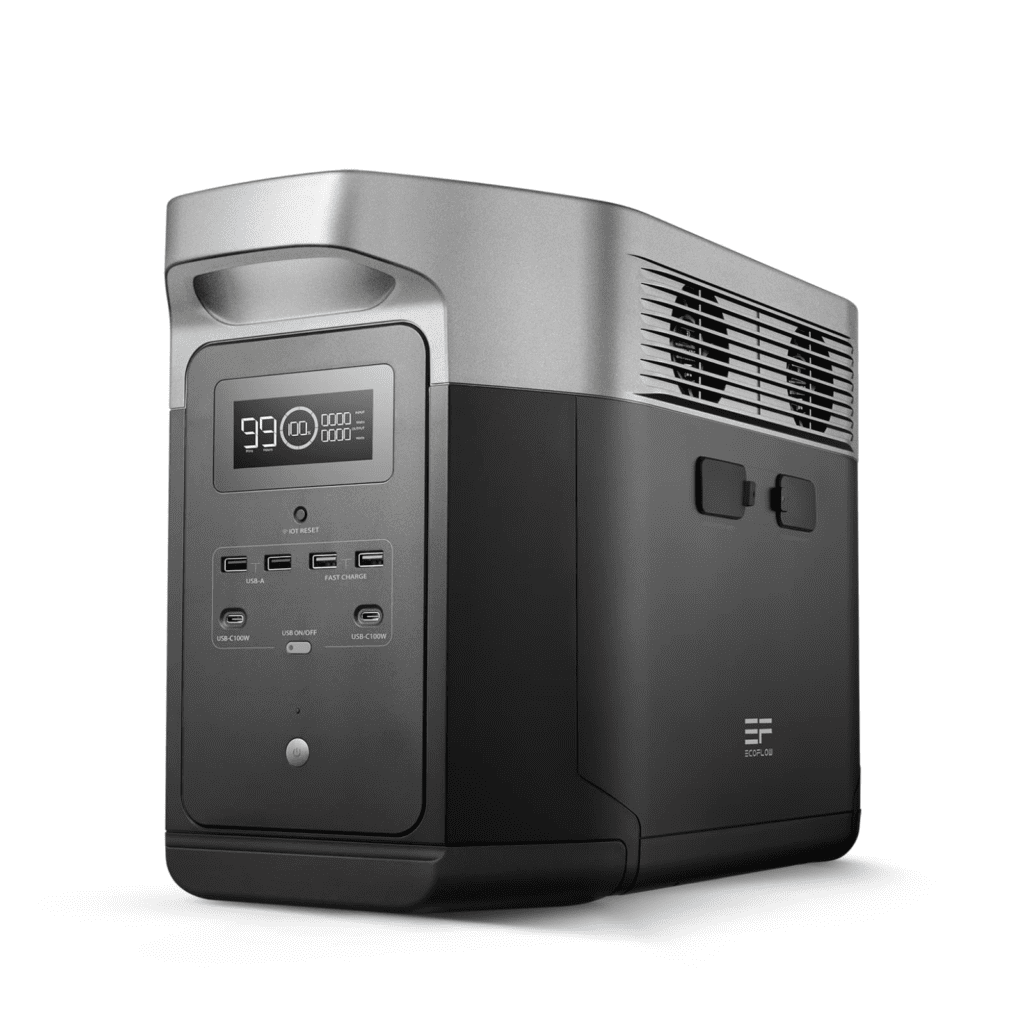

The EcoFlow DELTA Max is a powerful and versatile portable power station that can power various devices, including laptops, TVs, refrigerators, and power tools.
It has a capacity of 2880Wh, enough to power most appliances for several hours.
The DELTA Max can also be charged using solar panels, making it an excellent option for off-grid camping or emergency preparedness.
Key features
- 2880Wh capacity
- 4000W continuous output
- 800W surge output
- Solar charging compatible
- 12 output ports
- 500 cycles to 80%+ capacity
Pros and Cons of EcoFlow DELTA Max
| Pros | Cons |
|---|---|
| Powerful and versatile | Heavy and bulky |
| Solar charging compatible | Expensive |
| Long battery life | Not as quiet as some other models |
| Durable construction | |
| Easy to use |
The EcoFlow DELTA Max is an excellent choice for anyone who needs a powerful and versatile portable power station.
It is perfect for camping, tailgating, or any other situation where you need to power your devices off-grid.
However, it is essential to note that it is a heavy and bulky device, so it may not be the best choice for everyone.
I recommend the EcoFlow DELTA Max to anyone looking for a robust and reliable portable power station.
It is a bit expensive but worth the investment for its long battery life and solar charging capabilities.
2. Bluetti AC200MAX Solar Generator


The Bluetti AC200MAX is a powerful and versatile portable power station that can power various devices, including laptops, TVs, refrigerators, and power tools.
It has a capacity of 2048Wh, enough to power most appliances for several hours.
The AC200MAX can also be charged using solar panels, making it an excellent option for off-grid camping or emergency preparedness.
Key features
- 2048Wh capacity
- 2000W continuous output
- 4000W surge output
- Solar charging compatible
- 16 output ports
- 500 cycles to 80%+ capacity
- Touchscreen display
- Wireless charging
Pros and Cons of Bluetti AC200MAX
| Pros | Cons |
|---|---|
| Excellent power output and capacity | Charging time can be long |
| Great build quality | Noisy when in use |
| Lots of outlets and ports | Heavy and bulky |
| Can expand battery capacity up to 8192Wh | Limited charging speed with the included 500W AC adapter |
| Integrated port covers | |
| Great build quality | |
| Lots of outlets and ports |
The Bluetti AC200MAX is an excellent choice for anyone who needs a powerful and versatile portable power station.
It is perfect for camping, tailgating, or any other situation where you need to power your devices off-grid.
It is also a good option for home backup power in case of a power outage.
However, it is important to note that it is a heavy and bulky device, so it may not be the best choice for everyone.
3. Jackery Explorer 1000 Solar Generator


The Jackery Explorer 1000 is a portable power station that can power various devices, including laptops, TVs, refrigerators, and power tools.
It has a capacity of 1002Wh, which is enough to power most appliances for several hours.
The Explorer 1000 can also be charged using solar panels, making it an excellent option for off-grid camping or emergency preparedness.
Key features
- 1002Wh capacity
- 1000W continuous output
- 2000W surge output
- Solar charging compatible
- Nine output ports
- 500 cycles to 80%+ capacity
Pros and Cons of Jackery Explorer 1000
| Pros | Cons |
|---|---|
| Lightweight and portable | Solar panels not included |
| Great standby time | Specific socket size for solar charging |
| Long battery life | Not as quiet as some other models |
| Durable construction | |
| Super-fast solar charging |
The Jackery Explorer 1000 is an excellent choice for anyone who needs a powerful and versatile portable power station.
It is perfect for camping, tailgating, or any other situation where you need to power your devices off-grid.
It is also a good option for home backup power in case of a power outage.
Factors to consider when choosing a solar generator for off-grid living
Choosing the right solar power generator is crucial when deciding to go off-grid. After all, this single device would be responsible for powering my homestead.
Through extensive research, I learned there are various main factors to evaluate when selecting a solar generator for off-grid living:
Power Capacity
This determines how much energy your solar generator can store and supply.
Calculate your essential daily energy needs, then add buffer room. For instance, I need to run lights, a fridge, and electronics.
With a buffer room, a 1,000-watt generator could work for me.
But a family running power tools may need 2,000-3,000 watts. Consider your needs, then size up. Too little capacity will leave you powerless.
Solar Panel Efficiency
More efficient panels charge your generator faster using less solar energy.
Look for solar panels rated 15-22% efficiency. Quality and placement also impact charging speed.
My three 275-watt, 20% efficient panels positioned optimally can fully charge my generator in 4-5 hours of peak sun.
Battery Capacity
Days without sun mean relying on stored energy. Lithium batteries are lightweight, long-lasting, and energy-dense.
I chose a 1,000Wh battery capacity, giving me 2-3 days of backup power.
Go bigger if you expect longer stretches of clouds.
Portability
How much you need to move your solar generator should guide your choices here.
A heavy stationary unit may suffice if you’re living in a fixed, off-grid home. But prioritize lighter, more transportable models for a mobile tiny house or frequent camping.
For instance, some ultra-compact generators weigh under 20 pounds for true on-the-go power. Wheeled models provide heavy-duty hauling while maintaining up to 500 pounds capacity.
Whether stationary or transient living, factor in your unique mobility needs when selecting a solar generator’s portability. The right balance makes powering your off-grid life much easier.
Cost
Solar generator prices span from $1,000 to $5,000 or more. Prioritizing quality and reliability over bargain hunting pays off.
For example, investing $3,000 upfront for robust capacity and features can prevent needing expensive upgrades later.
Define your needs first, then set a budget for optimal long-term value.
Charging Time
Faster solar recharging is crucial for reliability. Prioritize high-efficiency panels (18-22%) that maximize sunlight conversion.
Also, look for generators with powerful charge controllers (30+ Amps) to rapidly refuel batteries.
Expandability
Opt for a solar generator that allows expanding capacity over time. For example, some systems let you double battery capacity by stacking additional units, while others enable adding more solar panels as needs increase.
Others enable adding more solar panels as needs increase. Prioritizing modular and upgradeable generators ensures your system can grow with your off-grid lifestyle’s evolving power demands.
Noise Level
Unlike noisy gas generators, solar systems run silently on the sun’s power.
Aim for super-quiet – less than 45-decibel ratings, with fanless inverter models being ideal.
You’ll appreciate the peace and quiet at your off-grid homestead.
Warranty
An extended warranty assures reliability and support. Look for at least a 2-year coverage, but five years is preferable for parts and labor.
It brings added peace of mind in case something goes wrong.
Additional Features
Convenience and functionality come from extra ports and outlets.
Prioritize units with multiple fast-charging USB ports, several standard AC outlets, and useful DC outlets.
The more ways to tap the stored power, the better.
Pros and Cons of Solar Generators for Off-grid Living
Understanding the pros and cons of solar power generators in an off-grid context is key.
These aren’t just emergency backup machines – they become your sole electricity source, day and night.
Weigh factors like independence vs. maintenance, sustainable power vs. capacity limits, and more unique to 100% solar reliance.
Here are the pros and cons of the solar generators or off-grid living:
| Solar Generator for Off-grid Living: Pros | Solar Generator for Off-grid Living: Cons |
|---|---|
| Live freely off-grid without utility bills | Higher upfront costs than grid power |
| Customize the system to your unique energy needs | Can’t directly power all heavy-duty appliances |
| Can’t directly power all heavy-duty appliances | Maintenance and repairs are do-it-yourself |
| Silent, eco-friendly, renewable electricity | Limited supply during prolonged bad weather |
| Scalable capacity over time as needs grow | Limited supply during prolonged lousy weather |
| It is not as cost-effective for light or intermittent use. | |
| It is not as cost-effective for light or intermittent use | |
What can you power with a solar generator?
For those considering off-grid living, you may be wondering – what devices and appliances can I actually run with a solar generator?
To answer this question effectively, I will categorize solar power generators for off-grid living into Small, medium, and large systems. This could be subjective, but it will help you understand the concept better.
Small Systems (300-1000 watts)
As per our categorization, small solar generator systems designed for off-grid use typically have 300-1000 watt capacity.
At this compact size, they work well for powering essentials and small electronic devices in remote cabins, RVs, and tiny homes.
For a minimalist like me, who only has the most essential electronics, this system is ideal for you.
Some examples of items a 300-1000 watt solar generator can reliably handle:
- LED light bulbs and lamps
- Laptops, tablets, and smartphone charging
- Mini-fridges and small fans
- WiFi routers and modems
- CPAP machines and small medical devices
- Short-term use of portable power tools or radios
- Speakers, TV streamers, cameras, and other electronics
- Water pumps for RVs or cabins
- Smoke detectors and security sensors
Carefully balancing your loads, a small 300-1000 watt solar generator provides you with sustainable electricity to cover your basic off-grid necessities.
Medium Systems (1000-3000 watts)
A medium-sized solar power system typically generates between 1,000 to 3,000 watts of electricity.
This power output level allows you to operate more appliances and devices than a small system.
Medium systems are great for powering everyday home essentials and small medical devices.
Here’s an overview of what a medium solar power system can run:
- Full-size refrigerator and freezer
- Television and home entertainment systems
- Microwave oven
- Power tools such as drills, saws, and sanders
- CPAP machines and other small medical devices
- Multiple lamps, phones, and laptop chargers
- Security system and WiFi router
- Electric cooker or induction cooktop
- Washing machine or clothes dryer
With 1,000 to 3,000 watts of power generation capacity, a medium system provides reliable electricity for powering most daily needs in a home or small business.
The system is sized for a good balance of upfront cost and everyday usability.
Large Systems (3000+ watts)
A large solar power system produces over 3,000 watts of electricity, allowing you to run higher-demand appliances when needed.
Large systems provide enough power for daily essentials plus convenient backup energy for medium-sized appliances.
Here’s an overview of what a sizeable solar generator can handle:
- All daily loads like lights, phones, TVs, routers, etc.
- Full-sized refrigerator and freezer
- Microwave oven
- Washing machine and clothes dryer
- Window air conditioner units
- Electric stove or cooktop
- Multiple power tools for hobbies/DIY projects
- Medical devices requiring consistent power
- Electric vehicle charging station
- Heating and cooling systems like fans and pumps
With over 3,000 watts of power output, an extensive solar system allows you to use convenient appliances while covering all your basic electricity needs.
The ample capacity ensures you can run appliances temporarily as needed.
Typical appliances and tools needed for off-grid living
To provide a helpful perspective, we evaluated the appliances and tools we personally use in our off-grid living situation.
We also asked around to find out what items are most essential for other people’s off-grid lifestyles.
Based on our own usage and the input from others, we researched the watt ratings for the most common tools and appliances.
This information will assist you in choosing the solar generator with the ideal capacity to power the essential devices you’ll depend on when living off the grid.
Here are some of the appliances and tools one needs for off-grid living. And their power rating:
| Appliance or Tool | Watt Rating |
|---|---|
| Fridge | 150-500 watts |
| Stovetop | 1000-2000 watts |
| Microwave | 1000 watts |
| Coffee Maker | 600-1000 watts |
| Toaster | 800-1200 watts |
| Blender | 300-500 watts |
| Vacuum Cleaner | 1000-1500 watts |
| Hair dryer | 1200-1800 watts |
| Computer | 100-300 watts |
| Flatscreen TV | 100-300 watts |
| Laptop | 20-40 watts |
| Phone Charger | 5-10 watts |
| Flashlight | 10-20 watts |
| Power Tool (drill, saw, etc.) | 500-1500 watts |
| Washing Machine | 500 Watts |
| Dryer | 1800 Watts |
| Central Heating Furnace | 400 Watts |
| Portable Electric Fan Heater | 2000 Watts |
| Central Air Conditioner | 2000 Watts |
| Window AC Unit | 1000 Watts |
| E-Bike | 500 Watts |
| Welding Machine | 1800 Watts |
| Electric blanket | 55 Watts |
| Lights and Lamps | 100 Watts |
Sizing Solar Generator for Off-grid Living


When selecting a solar generator for off-grid living, you must consider adequately sizing the system.
Follow these steps to choose a solar generator with the suitable capacity to power your essential devices:
- First, list the items you require electricity for in your off-grid home, such as lights, a refrigerator, phone chargers, power tools, etc. If there are high-draw appliances you plan to use occasionally, like a washing machine or microwave, include those as well.
- Next, determine the wattage requirements for each device. This specification is listed on appliance labels or in their user manuals. A phone charger may need only 30 watts, while a refrigerator could require 500 watts.
- Add up the wattages of the items you’ll power to estimate your total daily or weekly usage. Allow some buffer for future appliances or expanded usage. Match your total wattage needs to an appropriately sized solar generator. For example, 1000 watts can operate lights and small devices, while 3000+ watts is required for larger items like microwaves.
Take the time upfront to size your solar generator properly. This ensures your system can reliably power all your most essential devices when living off the grid.
Solar Generator Vs. Typical Solar System?
When looking into solar power for an off-grid lifestyle, you may wonder about the differences between solar generators and conventional solar systems. Here is a brief overview:
| Solar Generator | Typical Solar System |
|---|---|
| All-in-one plug and play unit | Requires professional installation |
| Lower capacity | Expands to meet all household needs |
| Portable power source | Permanently mounted panels |
| Has shorter runtime | Has longer runtime |
| Less maintenance required | More maintenance required |
In short, solar generators provide portable stored solar energy, while typical systems harness sunlight to directly power your home. Each has advantages for off-grid living, depending on your needs.
Solar Generator For Off-grid Solar Generator: Final Thoughts
When it comes to renewable off-grid power, solar generators shine as an ideal solution.
As we’ve seen, these clever devices harness the sun’s plentiful energy and make it available on-demand. Solar generators offer a portable, silent, and emissions-free source of electricity for life off the grid.
Choosing the right solar generator involves evaluating power capacity, solar panel efficiency, outlets, runtime, weight, and ease of transport.
Take the time to properly size your solar generator based on your essential electricity needs.
Weigh the pros and cons of popular models like the EcoFlow Delta Max, Jackery Explorer 1000, and Bluetti AC200MAX.
With a reliable solar generator, you can comfortably sustain an off-grid lifestyle.
Solar generators allow you to go off the grid without sacrificing modern conveniences. They provide independence and self-sufficiency while keeping your carbon footprint to a minimum.
The sun provides limitless renewable energy – harness it with a solar generator tailored for your off-grid world.
Frequently Asked Questions
How long does it take to charge a solar generator?
Most quality solar generators can fully charge under optimal sunlight in 4-8 hours. Larger capacity generators may require up to 12 hours for a full charge. Charging time depends on solar panel wattage, battery capacity, and weather.
What is the average lifespan of a solar generator?
The average lifespan of a solar generator is 20 to 35 years. However, the actual lifespan can vary depending on some factors, including the quality of the components, the frequency of use, and the maintenance of the device.

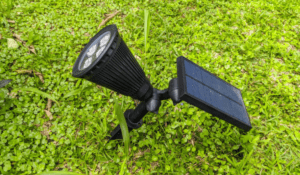
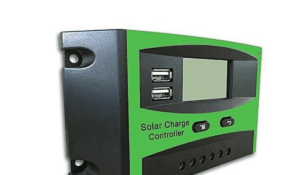


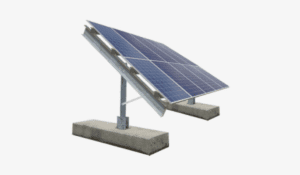

One Comment